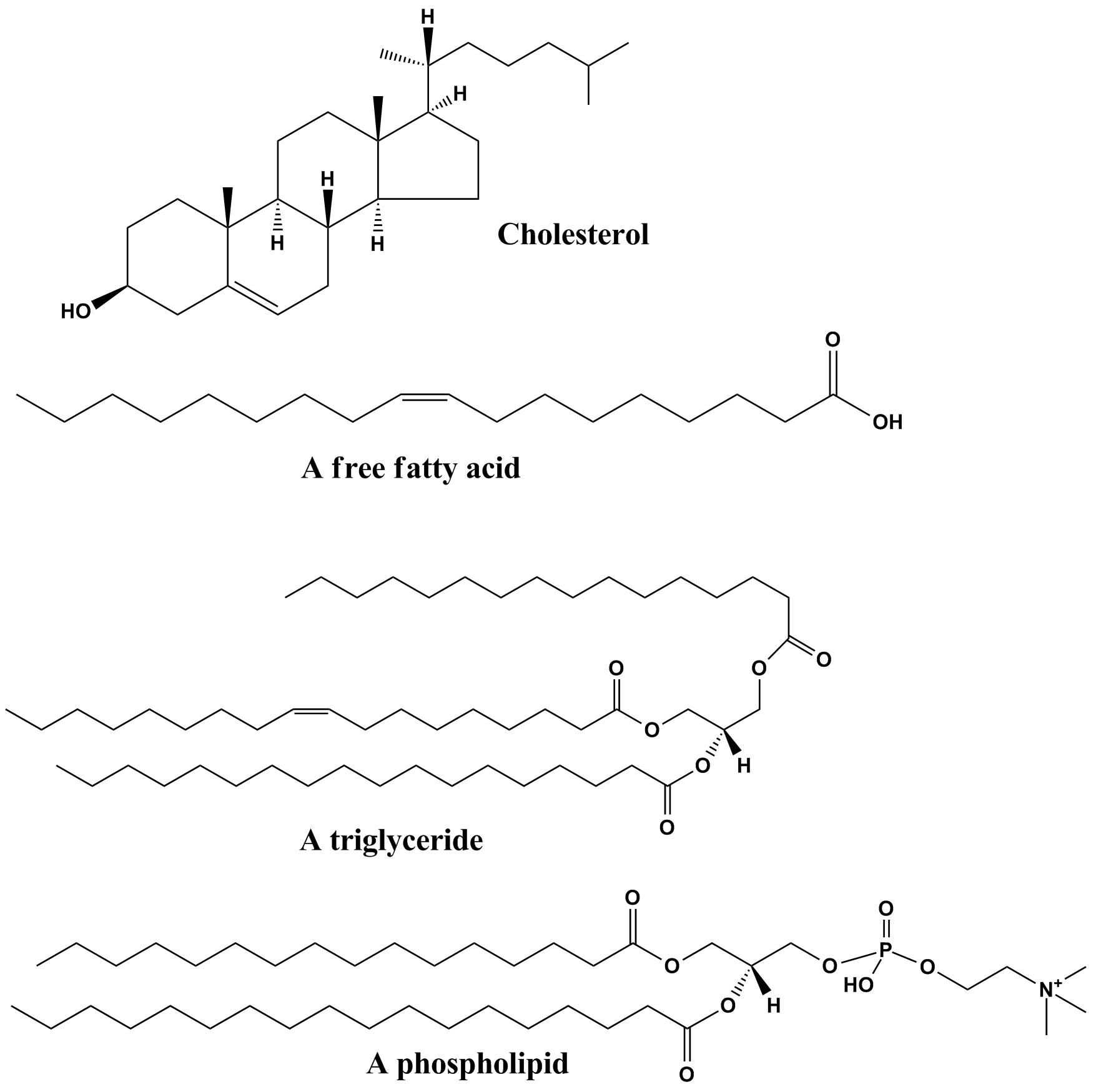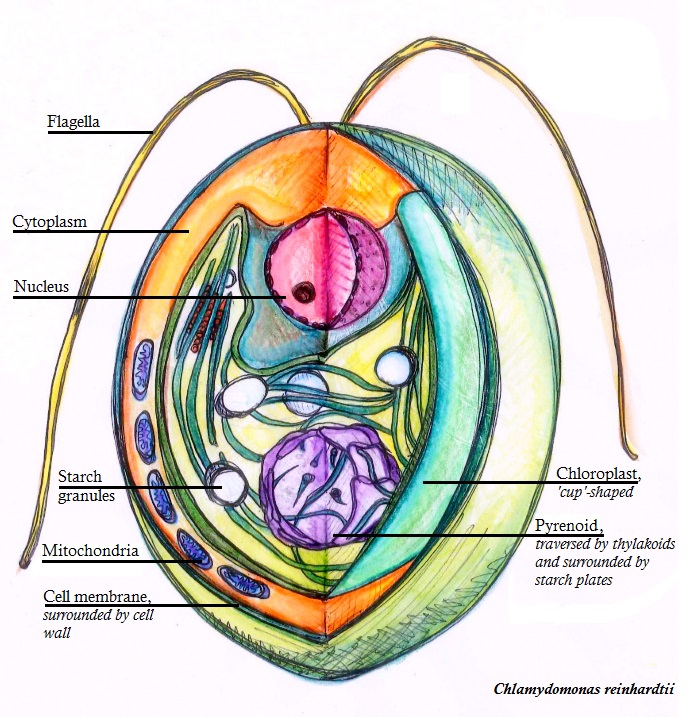|
SQDG
Sulfoquinovosyl diacylglycerols, abbreviated SQDG, are a class of sulfur-containing but phosphorus-free lipids (sulfolipids) found in many photosynthetic organisms. Discovery, structure and chemical properties In 1959 A. A. Benson and coworkers discovered a new sulfur-containing lipid in plants and identified it as sulfoquinovosyl diacylglycerol (SQDG). The sulfolipid structure was defined as 1,2-di-''O''-acyl-3-O-(6-deoxy-6-sulfo-α-D-glucopyranosyl)-''sn''-glycerol (SQDG). The distinctive feature of this substance is carbon bonded directly to sulfur as C-SO3. Sulfonic acids of this type are chemically stable and strong acids. Biological occurrence and functions SQDGs have been found in all photosynthetic plants, algae, cyanobacteria, purple sulfur and non-sulfur bacteria and is localised in the thylakoid membranes, being the most saturated glycolipid. SQDGs have been found to be closely associated with certain membrane proteins. In some cases the (electrostatic) inter ... [...More Info...] [...Related Items...] OR: [Wikipedia] [Google] [Baidu] |
SQDG Synthase
Sulfoquinovosyl diacylglycerols, abbreviated SQDG, are a class of sulfur-containing but phosphorus-free lipids (sulfolipids) found in many photosynthetic organisms. Discovery, structure and chemical properties In 1959 A. A. Benson and coworkers discovered a new sulfur-containing lipid in plants and identified it as sulfoquinovosyl diacylglycerol (SQDG). The sulfolipid structure was defined as 1,2-di-''O''-acyl-3-O-(6-deoxy-6-sulfo-α-D-glucopyranosyl)-''sn''-glycerol (SQDG). The distinctive feature of this substance is carbon bonded directly to sulfur as C-SO3. Sulfonic acids of this type are chemically stable and strong acids. Biological occurrence and functions SQDGs have been found in all photosynthetic plants, algae, cyanobacteria, purple sulfur and non-sulfur bacteria and is localised in the thylakoid membranes, being the most saturated glycolipid. SQDGs have been found to be closely associated with certain membrane proteins. In some cases the (electrostatic) interactio ... [...More Info...] [...Related Items...] OR: [Wikipedia] [Google] [Baidu] |
Sulfoglycolysis
Sulfoglycolysis is a catabolic process in primary metabolism in which sulfoquinovose (6-deoxy-6-sulfonato-glucose) is metabolized to produce energy and carbon-building blocks. Sulfoglycolysis pathways occur in a wide variety of organisms, and enable key steps in the degradation of sulfoquinovosyl diacylglycerol (SQDG), a sulfolipid found in plants and cyanobacteria into sulfite and sulfate. Sulfoglycolysis converts sulfoquinovose (C6H12O8S−) into various smaller metabolizable carbon fragments such as pyruvate and dihydroxyacetone phosphate that enter central metabolism. The free energy is used to form the high-energy molecules ATP (adenosine triphosphate) and NADH (reduced nicotinamide adenine dinucleotide). Unlike glycolysis, which allows metabolism of all carbons in glucose, some sulfoglycolysis pathways convert only a fraction of the carbon content of sulfoquinovose into smaller metabolizable fragments; the remaineder is excreted as C3-sulfonates 2,3-dihydroxypropanesulfonate ... [...More Info...] [...Related Items...] OR: [Wikipedia] [Google] [Baidu] |
Sulfolipid
Sulfolipids are a class of lipids which possess a sulfur-containing functional group. An abundant sulfolipid is sulfoquinovosyl diacylglycerol, which is composed of a glycoside of sulfoquinovose and diacylglycerol. In plants, sulfoquinovosyl diacylglycerides (SQDG) are important members of the sulfur cycle. Other important sulfolipids include sulfatide and seminolipid, each of which are sulfated glycolipids. Sulfolipids have been implicated in the functions of two of the core components of the photosynthetic electron transport chain and while not necessarily essential, might have a protective function when the photosynthetic apparatus is under stress. Must see * Sulfatide Sulfatide, also known as 3-O-sulfogalactosylceramide, SM4, or sulfated galactocerebroside, is a class of sulfolipids, specifically a class of sulfoglycolipids, which are glycolipids that contain a sulfate group. Sulfatide is synthesized primarily ... * Galactolipid *Phospholipid *Glycolipid References ... [...More Info...] [...Related Items...] OR: [Wikipedia] [Google] [Baidu] |
UDP-sulfoquinovose Synthase
UDP-sulfoquinovose synthase () is an enzyme that catalyzes the chemical reaction :UDP-glucose + sulfite \rightleftharpoons UDP-6-sulfoquinovose + H2O Thus, the two substrates of this enzyme are UDP-glucose and sulfite, whereas its two products are UDP-6-sulfoquinovose and H2O. In a subsequent reaction catalyzed by sulfoquinovosyl diacylglycerol synthase, the sulfoquinovose portion of UDP-sulfoquinovose is combined with diacyglycerol to produce the sulfolipid sulfoquinovosyl diacylglycerol (SQDG). This enzyme belongs to the family of hydrolases, specifically those acting on carbon-sulfur bonds. The systematic name of this enzyme class is UDP-6-sulfo-6-deoxyglucose sulfohydrolase. Other names in common use include sulfite:UDP-glucose sulfotransferase, and UDP-sulfoquinovose synthase. This enzyme participates in nucleotide sugars metabolism and glycerolipid metabolism. The 3-dimensional structure of the enzyme is known from Protein Data Bank entries 1qrr (Mulichak et al., 1999 ... [...More Info...] [...Related Items...] OR: [Wikipedia] [Google] [Baidu] |
Sulfoquinovose
Sulfoquinovose, also known as 6-sulfoquinovose and 6-deoxy-6-sulfo-D-glucopyranose, is a monosaccharide sugar that is found as a building block in the sulfolipid sulfoquinovosyl diacylglycerol (SQDG). Sulfoquinovose is a sulfonic acid derivative of glucose, the sulfonic acid group is introduced into the sugar by the enzyme UDP-sulfoquinovose synthase (SQD1). Sulfoquinovose is degraded through a metabolic process termed sulfoglycolysis. The half-life for mutarotation of sulfoquinovose at pD 7.5 and 26C is 299 minutes. See also * Sulfolipid * Sulfoglycolysis Sulfoglycolysis is a catabolic process in primary metabolism in which sulfoquinovose (6-deoxy-6-sulfonato-glucose) is metabolized to produce energy and carbon-building blocks. Sulfoglycolysis pathways occur in a wide variety of organisms, and enabl ... References {{Reflist Sulfonic acids Deoxy sugars Monosaccharides Sulfate esters ... [...More Info...] [...Related Items...] OR: [Wikipedia] [Google] [Baidu] |
Sulfur
Sulfur (or sulphur in British English) is a chemical element with the symbol S and atomic number 16. It is abundant, multivalent and nonmetallic. Under normal conditions, sulfur atoms form cyclic octatomic molecules with a chemical formula S8. Elemental sulfur is a bright yellow, crystalline solid at room temperature. Sulfur is the tenth most abundant element by mass in the universe and the fifth most on Earth. Though sometimes found in pure, native form, sulfur on Earth usually occurs as sulfide and sulfate minerals. Being abundant in native form, sulfur was known in ancient times, being mentioned for its uses in ancient India, ancient Greece, China, and ancient Egypt. Historically and in literature sulfur is also called brimstone, which means "burning stone". Today, almost all elemental sulfur is produced as a byproduct of removing sulfur-containing contaminants from natural gas and petroleum.. Downloahere The greatest commercial use of the element is the producti ... [...More Info...] [...Related Items...] OR: [Wikipedia] [Google] [Baidu] |
Lipids
Lipids are a broad group of naturally-occurring molecules which includes fats, waxes, sterols, fat-soluble vitamins (such as vitamins A, D, E and K), monoglycerides, diglycerides, phospholipids, and others. The functions of lipids include storing energy, signaling, and acting as structural components of cell membranes. Lipids have applications in the cosmetic and food industries, and in nanotechnology. Lipids may be broadly defined as hydrophobic or amphiphilic small molecules; the amphiphilic nature of some lipids allows them to form structures such as vesicles, multilamellar/ unilamellar liposomes, or membranes in an aqueous environment. Biological lipids originate entirely or in part from two distinct types of biochemical subunits or "building-blocks": ketoacyl and isoprene groups. Using this approach, lipids may be divided into eight categories: fatty acyls, glycerolipids, glycerophospholipids, sphingolipids, saccharolipids, and polyketides (derived from condens ... [...More Info...] [...Related Items...] OR: [Wikipedia] [Google] [Baidu] |
Membrane Lipids
Membrane lipids are a group of compounds (structurally similar to fats and oils) which form the double-layered surface of all cells (lipid bilayer). The three major classes of membrane lipids are phospholipids, glycolipids, and cholesterol. Lipids are amphiphilic: they have one end that is soluble in water ('polar') and an ending that is soluble in fat ('nonpolar'). By forming a double layer with the polar ends pointing outwards and the nonpolar ends pointing inwards membrane lipids can form a 'lipid bilayer' which keeps the watery interior of the cell separate from the watery exterior. The arrangements of lipids and various proteins, acting as receptors and channel pores in the membrane, control the entry and exit of other molecules and ions as part of the cell's metabolism. In order to perform physiological functions, membrane proteins are facilitated to rotate and diffuse laterally in two dimensional expanse of lipid bilayer by the presence of a shell of lipids closely attached ... [...More Info...] [...Related Items...] OR: [Wikipedia] [Google] [Baidu] |
Lipid
Lipids are a broad group of naturally-occurring molecules which includes fats, waxes, sterols, fat-soluble vitamins (such as vitamins A, D, E and K), monoglycerides, diglycerides, phospholipids, and others. The functions of lipids include storing energy, signaling, and acting as structural components of cell membranes. Lipids have applications in the cosmetic and food industries, and in nanotechnology. Lipids may be broadly defined as hydrophobic or amphiphilic small molecules; the amphiphilic nature of some lipids allows them to form structures such as vesicles, multilamellar/ unilamellar liposomes, or membranes in an aqueous environment. Biological lipids originate entirely or in part from two distinct types of biochemical subunits or "building-blocks": ketoacyl and isoprene groups. Using this approach, lipids may be divided into eight categories: fatty acyls, glycerolipids, glycerophospholipids, sphingolipids, saccharolipids, and polyketides (derived from ... [...More Info...] [...Related Items...] OR: [Wikipedia] [Google] [Baidu] |
Chlamydomonas Reinhardtii
''Chlamydomonas reinhardtii'' is a single-cell green alga about 10 micrometres in diameter that swims with two flagella. It has a cell wall made of hydroxyproline-rich glycoproteins, a large cup-shaped chloroplast, a large pyrenoid, and an eyespot that senses light. ''Chlamydomonas'' species are widely distributed worldwide in soil and fresh water. ''Chlamydomonas reinhardtii'' is an especially well studied biological model organism, partly due to its ease of culturing and the ability to manipulate its genetics. When illuminated, ''C. reinhardtii'' can grow photoautotrophically, but it can also grow in the dark if supplied with organic carbon. Commercially, ''C. reinhardtii'' is of interest for producing biopharmaceuticals and biofuel, as well being a valuable research tool in making hydrogen. History The ''C. reinhardtii'' wild-type laboratory strain c137 (mt+) originates from an isolate collected near Amherst, Massachusetts, in 1945 by Gilbert M. Smith. The species' name h ... [...More Info...] [...Related Items...] OR: [Wikipedia] [Google] [Baidu] |





